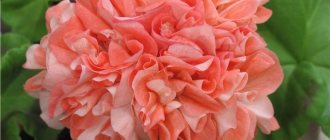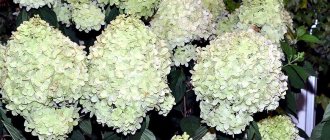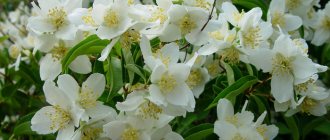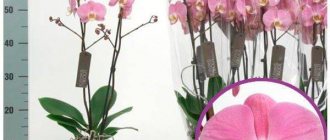Astra Nova
"Astra Nova" is a completely new variety of clematis with unusual white and purple flowers. Judging by the manufacturer's description, it is completely winter-resistant (USDA 6). However, there are chances that under good cover it will not only survive, but also preserve shoots for rapid growth and timely flowering.
- Trimming group: 3;
- Height: up to 2.5 meters;
- Flowers: medium size, with 6 white-purple sepals;
- Flowering: from July to September;
- Winter hardiness zones: 6-9.
Clematis grandiflora white
Usually, when imagining clematis, everyone immediately sees flowers in large, bright colors. But among the large-flowered species there are also those with white flowers, which are in no way inferior in beauty to their brightly flowering counterparts.
Description of the variety Miss Bateman
When clematis blooms, what are pruning groups?
Clematis Miss Bateman is one of the most popular varieties bred by the famous English breeder Charles Knowlb in the 19th century.
Main characteristics of the plant:
- a medium-sized woody vine, the height of which reaches 2.5 m;
- pruning group B, which means two flowering periods, the first of which occurs in June;
- the plant is very resistant to frost and has immunity to diseases and pests;
- Miss Bateman clings well to the support;
- large, up to 16 cm in diameter, flowers;
- the flowers consist of 8 petals, in the middle of each of which there is a vertical greenish stripe.
Important! Flowering is very long, lasting until frost.
Description of the clematis variety Bella (Bella)
Clematis Bella is a low-growing variety, no higher than 2 m.
Its advantage is that, despite the short length of the vine, it produces a large number of large white flowers, up to 15 cm in diameter. Pruning group C.
It looks great against the backdrop of contrasting plants with dark leaves, tolerates winter well, frost will not hit it, and it is also resistant to diseases and pests.
Description of the clematis variety Blekitny Aniol
The name of the variety Blekitny Aniol means “blue angel” in Polish. And most often it is called that way.
Clematis Blue Angel has the following characteristics:
- large-flowered, late-flowering plant;
- trimming group C;
- tall plant, up to 4.5 m long;
- flowers up to 15 cm, with 4-6 sepals;
- the color is light lilac or bluish;
- blooms from July until the first frost.
Clematis Blekitny Aniol
Description of the clematis variety Cassiopeia (Cassiopeia)
Cassiopeia is a beautiful name for a delicate, low-growing variety. They are intended for growing not only in open ground, but are also suitable for open verandas and balconies.
Main characteristics:
- height - up to 2 m;
- flower diameter up to 18 cm;
- White color;
- high frost resistance;
- cutting group A.
What diseases is the small-flowered clematis stinging liana susceptible to?
First of all, the liana suffers from diseases of fungal origin. Spotting sharply reduces the decorative properties of the plant. You can often see the appearance of powdery mildew.
To combat such diseases, fungicides . The drugs have a toxic effect on the human body. When spraying vines, you should follow safety rules. Use glasses, gloves, and protective clothing. Fungicides can be purchased in specialized stores.
Copper or iron sulfate is considered an effective remedy against fungal diseases . An effective remedy for fungal diseases is foundationazole . As a rule, a weak 0.2% solution is used. The surface of the soil under the plant is sprayed with the drug. In difficult cases, the top layer of soil should be replaced. If the result is negative, it is better to get rid of clematis. Otherwise, the disease will spread throughout the site or garden.
helps protect the plant from diseases and some insects . Such plants include calendula, nasturtium, and some varieties of phlox. In addition to their protective properties, brightly colored annuals favorably set off the snow-white inflorescences.
Spider mites and some types of scale insects pose a threat to the vine. To combat them, you should spray the bush with a weak solution of ash . Treatment with a preparation made from superphosphate . Plants are often sprayed with slaked lime .
Regular inspection of the vine for foci of disease helps to stop the disease in time, get rid of insect larvae, and preserve the appearance of the plant.
Description of the variety
Since the clematis variety Comtesse de Bouchaux is considered highly decorative, it makes sense to provide a detailed description of this crop. In addition to the traditional presence of flexible shoots and dense foliage for all clematis, the hybrid is also distinguished by large inflorescences. With proper care, their diameter can reach 15 cm, and the flowering period lasts from early summer to mid-September. The color of the petals can range from pink to lilac or purple, and since they curl outward, the flower appears to have a round shape (Figure 2).
In addition, it should be borne in mind that with proper planting and care, the life of the shrub will be at least 20 years, and during this time the shoots can grow up to 2-4 meters in length.
Among other characteristic features of the variety, it is worth highlighting:
- Resistance to frost and drought: all existing varieties of clematis are divided into groups according to their ability to tolerate frost. The Comtesse de Bouchaux variety belongs to group 4, so it can easily withstand temperatures down to -35 degrees without the risk of loss of viability. In addition, the plant is highly resistant to drought, although in the hot season it needs abundant watering. Thanks to these features, the decorative vine can be grown in any climatic region.
- Resistance to diseases and pests: unlike many natural varieties, which are often affected by diseases, the hybrid Comtesse de Boucho has good health and is extremely rarely affected by pathologies characteristic of ornamental crops. Thanks to this, preventive treatments with pesticides are minimal.
- Easy to care for: due to its vitality and ability to quickly adapt to a new place, this variety of decorative vine does not require special care. All agrotechnical measures come down to traditional watering, periodic fertilizing and pruning, followed by shelter for the winter.
Figure 2. Species characteristics of the hybrid variety.
The ease of propagation is also considered an obvious advantage of the variety. You can get a new young plant by rooting cuttings or layering, as well as by dividing an existing adult bush. All these methods relate to vegetative methods of propagation. It will not be possible to grow clematis Comtesse de Bouchaux from seeds, since plants obtained in this way will not have the species characteristics of the hybrid.
What do you need to know when planting a beautiful vine?
You should not be afraid to plant such a perennial. Growing it is not difficult, you just need to take into account some features when planting:
- it is a fast-growing vine, which adds fifteen centimeters to the shoot per day
- his comfortable place is sunny, windless
- the soil should be drainage with plenty of organic matter
- the flower drinks water well, but does not like it to stagnate
- the ground must be permeable
- due to the lack of a long root system, it is better to cover it for wintering
- he has a positive attitude towards feeding
- you need to retreat 70 cm from the wall of the house or fence
- When planting, the roots should be spread out
- between several bushes a distance of one and a half meters is maintained
- lattice, pergola, trellis are installed from east to west
- If the roots are dry when purchased, it is better to lower the bush into water so that it gains enough moisture.
- the hole should be made according to the size of the bush. For a large one it should be 70x70 cm and at least 70 cm deep for good root development
- When purchasing, you should consider climate zones
If such a list does not scare you, then in the near future clematis will delight you with abundant flowering and decorate your site.
Location: where is the best place to plant clematis?
Clematis prefer a bright or slightly shaded location
. However, it is necessary to avoid excessive heating of the soil, because this can harm the plantings and disrupt normal development and growth.
When placed in an open sunny place, the soil should be shaded at the roots with annual or perennial plants. A delimiter for roots up to 30–40 cm deep is also useful. The soil needs nutritious sandy loam or loamy soil. Just without over-watering.
Attention!
In areas where groundwater is located closer than 1.5 meters, clematis should not be planted.
Clematis - what kind of plant is it?
Clematis are perennial plants that belong to the group of lianas. Thanks to the bright inflorescences and variety of species, they are very popular. With proper care, it can grow in one place for quite a long time. The flower is unpretentious, but it needs proper watering, non-acidic soil, sunlight and support, since the plant is a climbing plant. Used to decorate complex garden objects, hedges, and as a carpet.
Nellie Moser
Timing of planting seedlings, site selection
You can plant cuttings of perennial vines in open ground both in spring and autumn.
In latitudes with cold climatic conditions, planting is best done in the spring, in early May. The landing site should be windless. Clematis love neutral, well-draining soil with nutrients. The fertility of the soil can be increased with a high-quality mixture of fertilizer with phosphorus (150 g), dense peat mass (1 bucket), sand (1 bucket), compost (1 bucket).
The seedling must have one good shoot and good roots. It is installed in a hole, at the bottom of which there is already drainage, then it is filled with part of the prepared mixture and watered abundantly. When planting, you should pay attention to ensure that the root collar remains at a depth of ten centimeters. The rest of the earth is then gradually filled up.
In autumn, clematis are planted in the south; the warm and mild climate conditions of such latitudes allow this to be done in September-October. In this case, the climbing perennial is planted with vegetative buds already appearing. The planting option is spring, but the planting hole should be filled with all the soil at once. The surface layer of soil must be mulched with sawdust or fallen leaves. When spring comes, in order to make it easier for young shoots to break through, the soil is removed from the hole to the depth of a finger, and by the end of the growing season it is returned back.
Which clematis do not require special care?
Experienced gardeners recommend first taking on clematis, which do not require special attention, in order to gain experience and then grow unusual varieties.
According to breeders, the variety of clematis exceeds half a thousand. They are separated according to the pruning method.
The first group includes buds that form on the shoots of the current season. The second is the buds that appear on the shoots of the previous growing season.
Any pruning is a good incentive for large formation of stems, wide branching and an abundance of flowers.
There are three main types of clematis:
- An herbaceous perennial in which all the stems die off at the end of the growing season
- Subshrub - in this species only the top of the bush dies off, and the bottom remains for several seasons
- Shrubs are formed woody stems that winter well and do not require pruning.
Lianas are wild-growing, large- and small-flowered, climbing and bush.
The varieties used in landscape designs and in garden plots are former wild clematis. They grew in a mild climate, grew well and bloomed in small inflorescences. They have limited colors - white, half-tones of blue, yellow. Rarely, you can come across red, crimson small flowers with a diameter of up to four centimeters. Their largest collection (more than two hundred species) is located in the Crimean Botanical Garden.
Peculiarities of growing the species of clematis “stinging small-flowered”
To grow small-flowered clematis stinging in your garden, you do not need to be an experienced gardener. It is important to follow a few simple agrotechnical rules and not make a mistake in choosing the location and soil for the vine. This has been discussed in detail above.
When to plant clematis stinging
The timing of planting Clematis pungentum seedlings depends on the region. In the middle zone, it is recommended to carry out planting work in the spring. This guarantees the survival of plants. In autumn, sudden cold snaps and sub-zero temperatures may occur in these regions. In mild climates, it is permissible to shift the planting date to autumn.
Terry clematis
Many gardeners love originality, including in growing clematis. And terry varieties look quite original and interesting. But novice gardeners should know that double flowers are formed on them only in the second flowering season; in the first year, single-row flowers appear. They can be given to flower growers who love variety and showiness in their flower beds.
Description of the clematis variety Teshio (Teshio)
How to grow clematis from seeds and seedlings
Clematis Teshio flowers look a little like dahlia flowers, they are just as beautiful and fluffy. The only differences are in size and color.
Teshio is a medium-sized variety, the height reaches 2.5 m. The color of the sepals is purple. Blooms from May to July. Belongs to pruning group B.
Important! Teshio is a light-loving variety that does not tolerate even light partial shade. It can be grown not only in open ground, but also in containers.
Description of the clematis variety Countess of Lovelace (Cantes of Lovelace)
Terry variety with medium vines, up to 3 m. Excellent weaving around a support or mesh.
The sepals are colored lilac, pink or bluish. Trimming group B. Flower size up to 18 cm.
The first flowering is from May to June, the second - from late June to September.
Variety Countess of Lovelace
Description of the clematis variety Arctic Queen (Arctic Queen)
Clematis Artik Queen is a double variety with white, large flowers. Can be grown in containers. It is best to choose a pyramidal shape for support; it will look especially impressive on it. Trimming group B.
The main flowering period is July-August.
Clematis are plants whose cultivation will be a real pleasure for all gardeners. They save space in the flowerbed without growing in width, but will decorate a gazebo, porch, house wall, fence, due to their height. They bloom brightly, for a long time, and require virtually no care. They will decorate any garden plot.
Description of the plant
Clematis, also known as Clematis, is a wide group of climbing perennial plants, covering thousands of varieties. Due to flower appearance, vigor and requirements, not all varieties have gained popularity. About 250-300 varieties are used in widespread cultivation for various purposes:
- decorating fences;
- landscaping of gazebos, terraces;
- growing in open areas in the garden;
- use as cover crops.
Typically, varieties are derived from any of the species described below (or hybrids formed from them). It is difficult to imagine a beautiful garden without wonderful varieties of clematis. Hybrids with large flowers are especially popular, the main flowering period of which is May-June. Less known are the so-called botanical varieties. Many of them bloom at a time when the hybrids are taking a break from flower development.
Thanks to different flowering periods, you can create a composition of clematis in the garden that will allow you to enjoy their beauty from April to October. Choosing from a large number of clematis species, hybrids and varieties is undoubtedly very difficult
At the beginning, it is important to determine the size of the flowers and the flowering season.
Spring-blooming clematis are pruned in June after flowering. Summer varieties are pruned in September. Autumn varieties require pruning in the spring.
Although the varieties of clematis are very diverse, they all have the same requirements: “legs in the shade, head in the sun” and regular pruning in accordance with their belonging to a particular group.
The most beautiful clematis of the third pruning group
These clematis varieties of pruning group 3 do not require any introduction; they can be recognized only by looking at the photo. The most beautiful and popular views.
Elegy
The variety is used to decorate gazebos because it grows quickly. The height is 3 m. There are many flowers on the vines. They are large, 13–15 cm in size. The color is blue-violet, which fades in the sun over time and becomes less bright. There is a purple stripe running down the center. The time of appearance of buds falls in July and ends with the arrival of autumn.
Victoria
The variety is characterized by large flowers up to 20 cm in diameter. The unusual color makes clematis stand out from other plants. The color is pink-red, with a contrasting stripe. Anthers yellow. The bulk of the inflorescences are concentrated in the upper part of the shoots. Blooms luxuriantly in July–September.
Nikolay Rubtsov
Clematis of the third pruning group grows up to 3 m. The blossomed bud acquires a purple hue, its size is 16 cm. There is a stripe in the middle. The edges are wavy. The core is yellow. The flowering period consists of two stages: the first begins in July, but after a month it withers due to the heat, the second - August - September, but less abundant.
Ernest Markham
Clematis is rightfully classified as one of the best varieties of pruning group 3. It has a rich, bright red color of the inflorescences. It grows slowly, blooms in July, but is very lush. Lianas are easily attached to natural supports and arches.
Important! Winters well, but requires thorough pruning.
Dr. Ruppel
Unpretentious variety. It is developing rapidly and actively growing. Attaches to vertical supports and building walls. The flowers are large, size 20 cm. The color is pink with white stripes along the edges.
Varieties 3 pruning groups
There are a large number of clematis varieties included in the third pruning group, but the best representatives are highlighted below with descriptions and photos.
Large-flowered
Large-flowered clematis are very popular among gardeners. They look impressive on the site.
Victory Salute
The shoots grow up to 2.5 m in length. The foliage is complex, dark green. The inflorescences are open, 15–16 cm in size. The anthers are light lilac. Sepals are pointed, elongated-diamond-shaped. The color gradually changes from lilac to a deep purple hue. The budding period is July – August.
Space melody
The shoots grow 2.5–3 m in length. Single flowers are formed on the 5th–6th upper node. The size of the inflorescences is on average 9–12 cm. The leaves are imparipinnate. Sepals are diamond-shaped, velvety, scarlet in color. Blooms in July–August. Needs pruning.
Golden Jubilee
The liana is on average 2–2.5 m. The foliage is simple, trifoliate. Young shoots have a purple tint. The inflorescences are large, 15–18 cm in size, star-shaped. Sepals are sharp purple, 6–8 pieces. The anthers are light yellow. Buds form on new branches from July to September.
Teal
The length of the shoots is 2.5–3 m. The foliage is bright, juicy, and has a characteristic shape. Flowers when open are 10–12 cm. There are an average of up to 7 sepals, velvety texture, diamond-shaped, with sharp tips, dark blue in color. Anthers yellow. Flowering occurs in June and lasts until August.
Smoky
The average length of shoots is 2.5 m. The foliage is trifoliate, rich green. There are 6 sepals, they have an original shape. Inflorescences are 15 cm in size, gray-blue in color. The opening of buds begins in July, flowering ends in August.
Mephistopheles
The vines are long, up to 4 m. Inflorescences appear on the 9th–10th upper node of young shoots. Their size is 12–14 cm. The edges of the petals are curled outward. The sepals are oval in shape with pointed tips and velvety. The color is dark purple, closer to black. It has good immunity to fungal infections. It blooms profusely in mid-July and continues flowering until October.
Important! Deep pruning for winter is recommended.
Small-flowered
Small-flowered plants of the 3rd pruning group attract gardeners because they provide the opportunity to plant polygyny of different varieties. They are distinguished by abundant and long-lasting flowering, as well as an interesting shape.
Clematis stinging
The length of the lashes is 5 m. Thanks to good branching, the bush reaches a width of 4 m. The inflorescences have the shape of a cross with a lush sepal inside. There are only 4 petals. The buds are small, but there are many of them. The aroma is sweet with subtle notes of almond. Flowering in July – August.
Manchurian
The height of the bush varies from 2 to 5 m. The dimensions are compact. Flower size is 2.5 cm, cross-shaped. Color white. There are four petals. The aroma is light, barely perceptible. Frost-resistant. Flowering time: June – July.
Princess Diana
The bush is up to 3 m high. The clematis itself is small, up to 7 cm. The shape is bell-shaped. Petals – 4. The color is soft pink with a white edge. Abundant flowering begins in July and continues until autumn. In October, complete pruning of old shoots is expected.
Princess Kate
The variety belongs to Texas hybrids. The bush is more lush, up to 4 m in height. The size of the inflorescences is 6 cm. The bell shape is at first semi-closed, then opens. Petals are light lilac. The middle is dark pink. Blooms all summer.
Important! Tolerates winter well.
Arabella
The bush is compact, low, reaches a height of 2 m. It can grow with or without support. The flowers are large, size – 10 cm. The color of the petals is purple with pronounced grooves. The flowering is so abundant that the foliage is almost invisible. Time: June–October.
Vanguard
Bred in 2004 by breeders from Great Britain and was immediately included in the third pruning group. The height of the bush is 3 m. Clematis is 5 cm in diameter. The petals are pink, the core is terry. It is characterized by high winter hardiness when completely pruned in autumn. Blooms in July–September.
Terry clematis 3 pruning groups
Very showy and attractive flowers. Due to their unusual texture they give the site an original look.
Purpurea Plena Elegance
The size of the vine is 3–4 m in length. This clematis is used as a ground cover plant. The size of the petals is small, the texture is terry, and they look slightly wrinkled. Color burgundy. Flowering period: July – September.
Mazuri
The size of the shoots is 2–3 m. The color of the petals is spotted, pale blue. The texture of the inflorescences resembles papyrus paper. The size is large. An unpretentious subspecies, grows in shady places. Flowering is observed from June to September. The variety is also known as Crater Lake.
Stasik
The terry clematis variety of the third pruning group belongs to the selection of M.F. Sharonova. Looks great in combination with other shrubs. Velvet inflorescences. The color is unusual, wine red. Compact size – up to 2 m.
Blue flame
The height of clematis of the third group is 3.5–4 m. The flowers are large, up to 18 cm in size. The color is violet-blue with a white central stripe. The anthers are yellowish. A large mass of inflorescences is located in the lower part of the bush. In spring, semi-double species are found. Blooms poorly in partial shade. The buds bloom from July to September. After flowering, the vines are supposed to be pruned for the winter.
Varieties of white clematis 3 pruning groups
White clematis 3 pruning groups give the site a unique and beautiful appearance. Create comfort. White color is a symbol of purity.
Summer snow
The subspecies has been known since 1964. The shoots are tall, 7 m long. The foliage is large, complex, with 5–7 buds of a dark green hue. Flowers are collected in inflorescences of 6 pieces. When opened, their diameter is 7 cm. The sepals are white. Anthers yellow. Flowering period – July – September. The aroma is delicate, sweet.
Roko-Colla
The result of Estonian breeders. The average length of the vine is 1.5–2 m. It climbs well along supports, other shrubs, and trees. Medium size, white with cream veins. It blooms luxuriantly from July to August.
John Huxtable
Another bright representative of white clematis of the 3rd pruning group. A variety with pure white petals and cream stamens. Blooms from mid to late summer. Growth is moderate. The petals are flat and wide. Looks good as a contrast against a dark background.
Important! Resistant to fungal diseases.
Paul Ferges
The variety is distinguished by its branchiness. Over the summer, a young shoot can grow up to 7 m. Moreover, the vines have good tenacity to various supports. Medium size flowers. The color is white, the core has a greenish tint. Flowering time July – October.
Huldin
This representative of white clematis varieties of pruning group 3 is distinguished by delicate flowering and a delicate aroma. The vines are long, growing up to 7 m. The inflorescences are beautifully shaped, large. The petals have a rich white tint. The diameter of the clematis inflorescence is 8 cm. Sometimes a purple tint appears. The flowering time is short: the beginning is at the end of summer, and the end of the process is in September.
Varieties of pink clematis 3 groups
Such varieties evoke a romantic mood. The color pink represents tenderness and dreaminess. The colors are varied: from pale pink to pink-purple.
Dunata
The variety was bred in Poland in 1996. The height of the bush is 2–2.5 m. The flowers are large, 16 cm in size. The color of the petals is pink with beige stamens. Blooms in June. It is characterized by frost resistance, which is valuable for the climate of Central Russia.
Yalta sketch
The author of this clematis variety of pruning group 3 was M. A. Beskaravainaya in 1973. Fully open flowers have a flat shape. Diameter – 15–16 cm. The color is intense pink, but the brightness depends on weather conditions. With sufficient light, the petals fade, becoming pale pink. The first flowering occurs in mid-June, and the second one in August. The variety has an international certificate.
Hagley Hybrid
The difference between this clematis is its unusual pink hue. The length of the lashes is 3 m. Large inflorescences reach 16 cm. The color of the petals is soft pink with crimson streaks, the top of the stamens is bright red. They bloom in July and finish the process in August.
Important! The variety is frost-resistant.
Comtesse de Bouchaud
The vines stretch 3–4 m in length. Clematis flowers are large, up to 15 cm. The color of the petals is pink, with a slight waviness along the edge. The core is yellow. The variety has a long flowering period, which begins in July.
Pink Fantasy
It is a vine shrub 2.5 m high. Suitable for growing in containers. The color of the flowers is pale pink. The size of the blossoming clematis buds is 15 cm. There are up to 7 petals. The anthers are brown. Blooms in July.
The best clematis in the garden and country house
In nature, numerous species of clematis grow mainly in the temperate zone of the northern hemisphere, found in forests and steppes, meadows and river valleys, on hills, rocks and cliffs. Many of them have long been widely used as ornamental crops.
In Europe, the flower became famous in the 16th century, and in East Asia, in particular in Japan, its decorative qualities were appreciated much earlier. The first description of clematis in European literature is given in a plant catalog compiled by the English physician and botanist William Turner in 1548. In this work, the scientist presented a bright hedge of flowering clematis (C. vitalba), and already in 1569, purple clematis (C. viticella) appeared in the gardens of Britain, which was used in the first attempts to cross the crop. Subsequently, several more varieties were imported into the country from Eastern and Southern Europe, but the ancestors of modern large-flowered hybrids are the Chinese species, clematis florida, and the native of Japan, clematis spreading (C. patens). appeared in British gardens much later, almost 180 years later. The first successes in creating varieties with large flowers were achieved by the breeder from Odenburg, Isaac Anderson-Henry, whose cultivar Regina in 1855 created a real sensation among gardeners. After this, active work began on breeding hybrid forms, as a result of which more of them were created from 1860 to 1890 than in the entire history of the culture.
Then the breeders failed, the newly created hybrids began to be massively affected by the infectious disease, clematis wilt, as a result of which they ceased to be in demand, and work on creating new varieties stopped. Only 50 years later, the culture regained its popularity, and is currently one of the most common ornamental perennials for vertical gardening.











